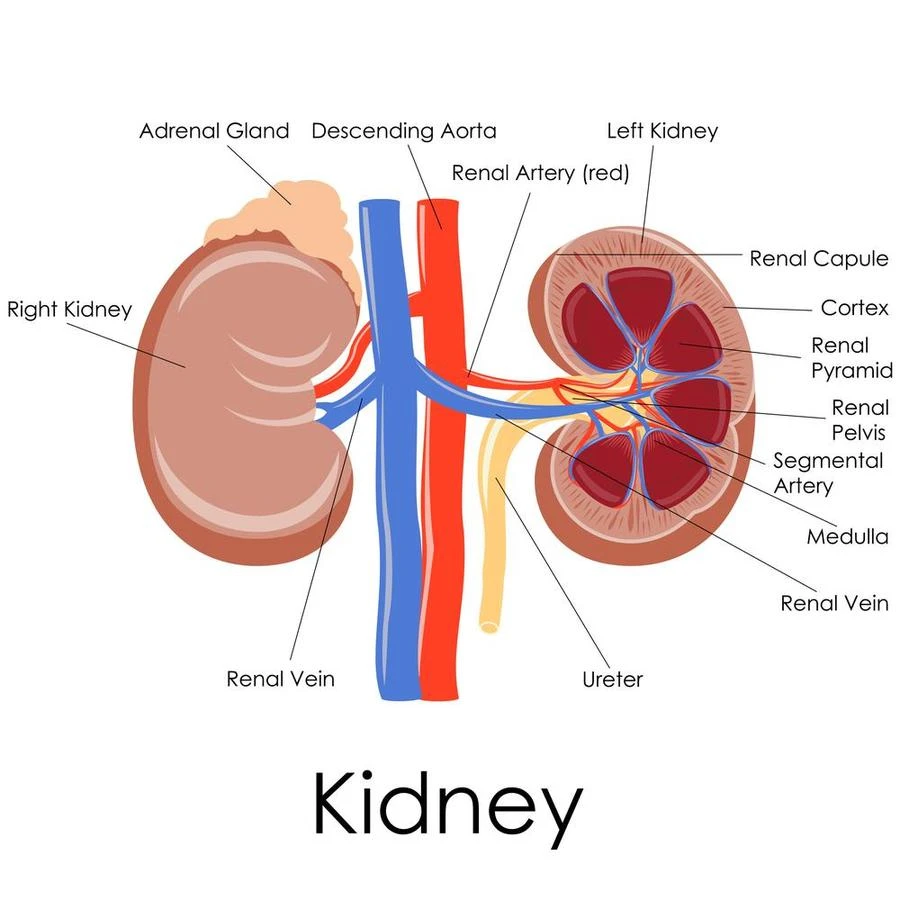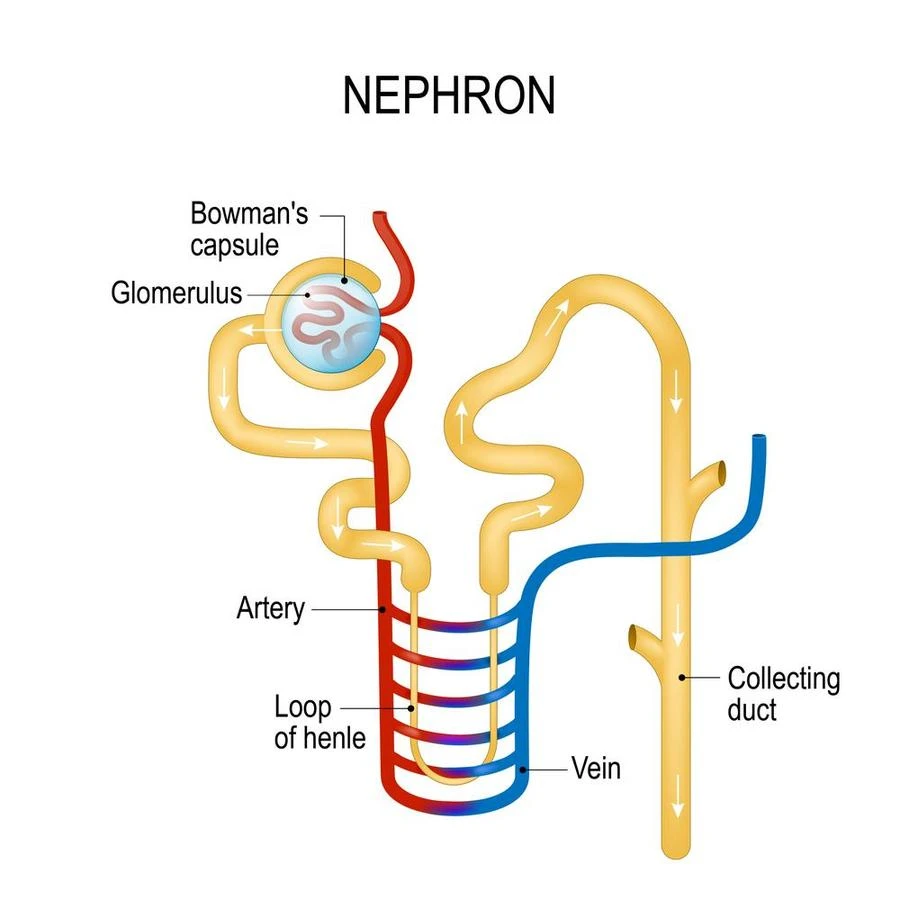Introduction
Excretion is the process by which wastes and surplus fluid are eliminated from the bloodstream by generating urine in terms of the kidneys. The left and right kidneys are two of the body’s main organs involved in the excretion process. Despite being anatomically similar, there are some slight differences between the left and right kidneys.
What is Kidney?
The kidney is a vital organ in the human body that plays several important roles in maintaining good health. Filtering waste and extra fluid from the bloodstream, maintaining electrolyte balance, and generating hormones that control blood pressure and promote the creation of red blood cells are some of its essential duties as regulating the body’s acid-base balance. There are two kidneys, located on either side of the spine in the lower back, that work together to perform these functions.
The right and the left kidney are two main types. Both kidneys are nearly identical in size and shape and perform the same functions. They are responsible for filtering waste and excess fluid from the bloodstream, balancing electrolytes, releasing hormones that control the body’s acid-base balance, and blood pressure, and stimulating red blood cell synthesis.
Structure of Kidney
The structure of the human kidney is composed of several different parts that work together to perform its various functions. Some of the key parts of the kidney include:
- Nephron: The fundamental structural and operational component of the kidney is the nephron. Each kidney contains a little over a million nephrons. Reabsorbing beneficial substances like glucose and amino acids into the bloodstream, the nephron filters the blood.
- Bowman’s capsule: It surrounds the glomerulus, a network of tiny blood vessels, and helps to filter waste and excess fluid from the bloodstream into the renal tubules.
- Renal tubules: The renal tubules are a series of tubes that carry waste and excess fluid from the Bowman’s capsule to the ureter. Reabsorbing beneficial molecules like glucose and amino acids back into the bloodstream is another function of the renal tubules.
- Ureter: The ureter is a tube that carries urine from the kidney to the bladder.
- Renal pelvis: Urine from the renal tubules is collected by the renal pelvis, a funnel-shaped organ, and is then directed into the ureter.
- Blood vessels: The kidney is supplied with blood by the renal arteries and drains into the renal veins. The blood vessels play a crucial role in filtering waste and excess fluid from the bloodstream and in regulating blood pressure.

Functions of the kidney
The kidneys are essential organs that perform several important functions in the human body, including:
- Filtering waste and excess fluid: Urine is produced by the kidneys as they filter waste and extra fluid from the bloodstream for elimination. This aids in preserving the body’s proper fluid and electrolyte balance.
- Balancing electrolytes: The kidneys help to regulate the levels of various electrolytes, such as sodium, potassium, and calcium, in the bloodstream.
- Regulating blood pressure: The kidneys produce hormones that regulate blood pressure by controlling the amount of fluid in the bloodstream.
- Stimulating red blood cell production: Erythropoietin, a hormone produced by the kidneys, encourages the bone marrow to create more red blood cells.
- Regulating acid-base balance: The kidneys help to regulate the body’s acid-base balance by removing excess acid or base from the bloodstream.
- Producing active vitamin D: Vitamin D is made active by the kidneys, which also aids in calcium absorption and the maintenance of healthy bones.

Maintenance of the kidney
To maintain good kidney health, there are several steps you can take, including:
- Staying hydrated: Drinking plenty of water helps to flush waste and excess fluid from the kidneys and maintain good kidney function.
- Eating a healthy diet: A diet high in fruits, vegetables, and whole grains and low in salt can support kidney function.
- Managing chronic conditions: It’s crucial to appropriately treat chronic conditions like diabetes or high blood pressure if you want to reduce their negative effects on your kidney health.
- Avoiding harmful substances: Substance abuse, such as heavy alcohol consumption and smoking, can harm kidney health.
- Exercising regularly: Regular exercise can help to improve circulation and maintain good kidney health.
Difference Between Left And Right Kidney
The left and right kidneys are almost identical in anatomy and function, with a few minor differences:
- Location: Due to the liver’s structure, the right kidney is situated slightly lower than the left kidney.
- Size: The two kidneys are generally of similar size, but in some people, one kidney may be slightly larger or smaller than the other.
- Blood supply: The left and right renal arteries have slightly different origins and branching patterns, but both supply the kidneys with blood and oxygen.
- Drainage: While the left kidney drains into the left renal vein, the right kidney drains into the inferior vena cava.
Conclusion
The kidneys are the bean-shaped structures on either side of the spine behind our stomach. It is our body’s major excretory organ. It eliminates metabolic waste from our bodies through urine. Filters the blood as well. Nephrons are the kidney’s structural unit. Individuals with serious health problems are at risk of damaging one or both kidneys. In the event that one kidney fails, the excretory function can be performed normally by the other kidney. Death might result from complete renal failure in both kidneys. In this scenario, dialysis should be attempted first, and if that fails, kidney transplantation should be considered.
Frequently Asked Questions
1. What are some diseases related to Kidneys?
Many diseases and conditions can affect the kidneys and their ability to function properly. Some of the most common kidney-related diseases include:
- Chronic Kidney Disease
- Glomerulonephritis
- Acute Kidney Injury
- Polycystic Kidney Disease
- Nephrotic Syndrome
- Nephritis
- Kidney Stones
2. What is the role of electrolytes in the kidney?
The body’s electrolyte balance is crucially maintained by the kidneys. Electrolytes are minerals that carry an electrical charge and are necessary for numerous bodily processes, including sodium, potassium, calcium, and magnesium. The kidneys help regulate the levels of electrolytes in the blood by filtering the blood and reabsorbing the electrolytes that are needed by the body, while excreting the excess through urine.
3. What is the role of the kidney in osmoregulation?
Osmoregulation, or the control of the water balance and electrolyte content in the body, is a critical function of the kidneys. To maintain the right balance of electrolytes, such as sodium and potassium, in the blood, the kidneys filter the blood and remove extra water, salt, and waste materials. Through the reabsorption of ions and water, the kidneys actively manage the balance of water and electrolytes in the body in addition to filtering.